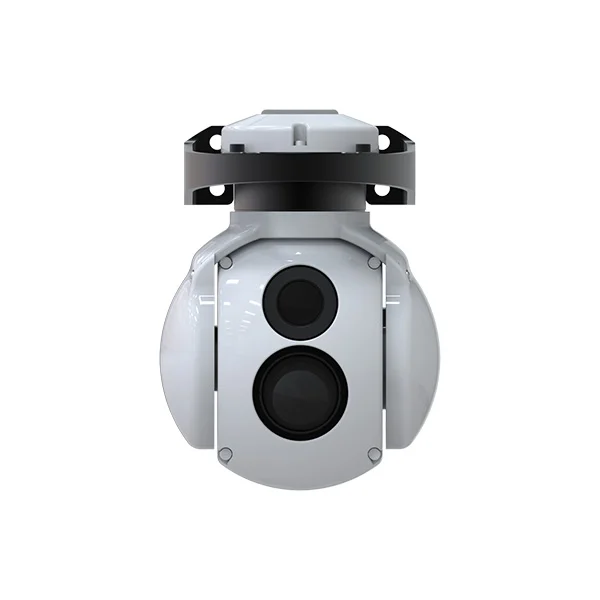- This topic is empty.
-
AuthorPosts
-
2025-10-31 at 3:38 pm #5254
In today's aerial imaging industry, stability and clarity define success. Whether for mapping, surveillance, inspection, or cinematography, drones need advanced imaging systems that deliver uncompromised performance in demanding environments. A UAV gimbal camera has emerged as the gold standard for ensuring stabilized footage, accurate positioning, and professional-grade results. Unlike fixed-mounted cameras, gimbal technology provides smooth and shake-free imagery, even in turbulent air or high-speed flight conditions. For businesses that depend on aerial data, this equipment is not simply an accessory—it is a core component of operational excellence.

Performance Advantages of UAV Gimbal Camera
Advanced Three-Axis Stabilization
The most significant advantage of a UAV gimbal camera is its stabilization capability. Unlike fixed-mounted cameras that are highly sensitive to vibrations and sudden UAV movements, a gimbal uses three-axis stabilization technology to counteract roll, pitch, and yaw. This ensures steady, shake-free footage even when the drone is flying in turbulent weather or making abrupt directional changes. The stabilization system is powered by precision motors and advanced gyroscopic sensors that work in real time, maintaining camera balance to achieve cinematic smoothness.
High-Resolution Imaging and Versatile Sensors
A UAV gimbal camera is designed for professional-grade imaging. Equipped with high-resolution optical sensors, it delivers crystal-clear photos and ultra-HD videos suitable for industrial analysis and creative content production. Many models integrate zoom lenses, allowing both wide-angle landscape shots and precise close-up inspections. In specialized applications, gimbal cameras can also be configured with thermal, infrared, or multispectral sensors, extending their use beyond visual imaging into agriculture, energy monitoring, and security operations.
Remote Control and Real-Time Responsiveness
Another performance advantage is the seamless integration between the gimbal camera and UAV control systems. Operators can remotely adjust camera angles, zoom levels, and focus points during flight. Real-time responsiveness ensures that every angle can be captured without needing to reposition the drone. This flexibility is particularly valuable in dynamic missions, such as search and rescue, where immediate visual adaptation can make a critical difference.
Lightweight but Durable Construction
Weight is a determining factor in UAV endurance. A UAV gimbal camera combines lightweight construction with high durability. Materials such as aerospace-grade aluminum or carbon fiber are commonly used to achieve the right balance between strength and minimal payload burden. This ensures drones can maintain longer flight times while still carrying robust imaging equipment that withstands harsh environmental conditions.
Consistent Image Quality Across Conditions
Vibration, wind, and drone acceleration are common causes of blurry or distorted images. The built-in compensation system of a UAV gimbal camera eliminates these issues, ensuring consistent image quality. Whether capturing footage for film production or conducting industrial inspections, professionals can rely on the system to deliver precise, stable, and reproducible results every time.
Industry Applications of UAV Gimbal Camera
Aerial Cinematography and Media Production
The film, advertising, and entertainment industries rely heavily on drones for aerial shots that would traditionally require helicopters or cranes. A UAV gimbal camera allows filmmakers to capture smooth, cinematic footage with dynamic movements and unique perspectives. By providing stable, high-resolution imagery, it enables directors to achieve professional-grade results without the high costs of traditional aerial cinematography.
Agriculture and Environmental Monitoring
Modern agriculture benefits significantly from UAVs equipped with gimbal cameras. Farmers use them to monitor crop growth, assess irrigation efficiency, and detect early signs of disease or pest infestation. When fitted with multispectral or thermal sensors, a UAV gimbal camera can collect data that goes beyond visible light, providing detailed insights for precision agriculture. Similarly, environmental researchers use gimbal cameras to survey forests, wetlands, and wildlife habitats without disturbing ecosystems.
Industrial Inspection and Infrastructure Management
Infrastructure maintenance is another key area where UAV gimbal cameras play a transformative role. From inspecting power lines and pipelines to monitoring bridges and wind turbines, drones provide a safer and more efficient method of collecting visual data. The stabilization of a UAV gimbal camera ensures that images are sharp enough to reveal small defects, cracks, or wear that might otherwise go unnoticed. This minimizes downtime and reduces the need for dangerous manual inspections.
Security and Law Enforcement
In the field of surveillance, a UAV gimbal camera enables law enforcement agencies and private security companies to monitor large areas quickly and discreetly. Stabilized imaging is essential for tracking moving targets or scanning urban environments. With zoom and infrared capabilities, UAV gimbal cameras provide critical real-time information for crowd management, border surveillance, and emergency response situations.
Emergency Response and Search & Rescue
During natural disasters or rescue missions, UAVs with gimbal cameras become invaluable tools. A UAV gimbal camera equipped with thermal imaging can detect heat signatures of missing persons in forests, collapsed buildings, or flood zones. The stability of the gimbal ensures that rescuers receive accurate, actionable data even under difficult flying conditions. This improves response speed and effectiveness, often making the difference between life and death.
Construction and Real Estate
In construction, project managers use drones to document progress, verify structural integrity, and provide stakeholders with accurate visual reports. A UAV gimbal camera delivers the level of stability and clarity needed for detailed site analysis. In real estate, high-quality aerial imagery enhances property marketing, offering prospective buyers immersive perspectives that traditional photography cannot achieve.
The UAV gimbal camera is more than just an accessory; it is a critical component that determines the success of aerial imaging missions. Its advanced stabilization technology, high-resolution sensors, remote controllability, and durable construction provide unmatched performance advantages. At the same time, its versatility extends across multiple industries, from cinematography and agriculture to security, industrial inspection, and emergency response. By integrating a UAV gimbal camera into their operations, professionals gain access to stabilized, high-quality visuals that drive efficiency, safety, and innovation. In every application, it delivers clarity and reliability, turning UAVs into powerful tools for both business and humanitarian purposes.
https://www.lokia.tech/Maximizing-Aerial-Precision-with-UAV-Gimbal-Camera-Advantages-and-Uses.html
https://www.lokia.tech/UAV-Drone-Gimbal-Camera
http://www.lokia.tech
LOKIA -
AuthorPosts
- You must be logged in to reply to this topic.

